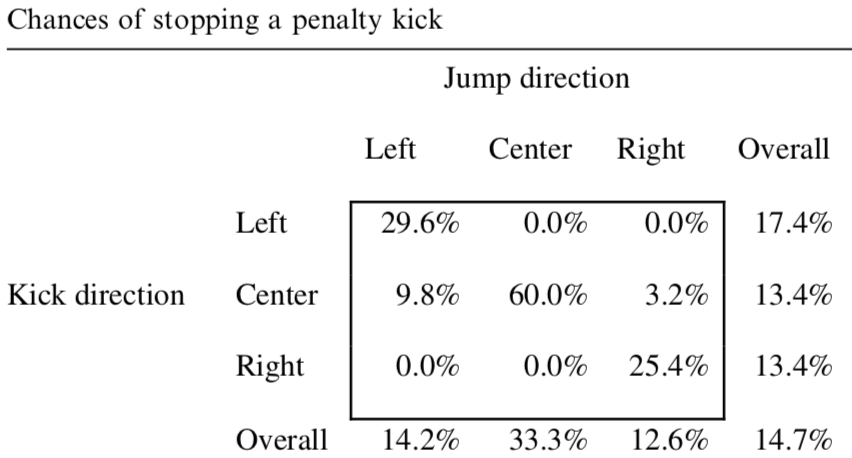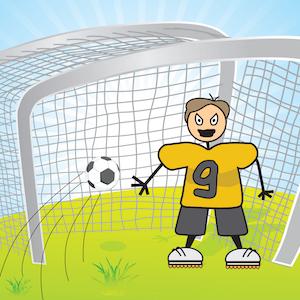The match is on the line.
This penalty kick will decide it all. Sweat is dripping down the kicker's face. The goalie's too. They glare at each other. The kicker takes a deep breath. All the pressure is on him. The referee blows his whistle. He trots a few steps toward the ball, aims, and kicks as hard as he can. The goalie dives to the left, but...
GOOOOOOOOOOOOAL!!!!!!!
The kicker celebrates. The goalie buries his head in his hands. He guessed incorrectly. But if only he had listened to science, the goalie would have just stood in the middle of the goal. Then, he might have had a better chance to make the save of his life.
Several years ago, a team of Israeli researchers examined the distribution of 286 penalty kicks as well as the direction in which the goalie jumped (if any). They found that the goalie has the best probability of preventing a goal if he simply remains in the center.

But goalies usually don't do that. Despite the fact that the statistically best option is to stand in the middle of the goal, they usually dive to the left or right. Why?
The authors hypothesized that a goalie has a strong incentive to "do something," a phenomenon known to psychologists as action bias. If during a penalty kick, the goalie just stands there, he risks looking stupid. Nobody wants to look stupid. So, they jump. Sure enough, when the authors asked 32 goalkeepers what they would typically do during a penalty kick, the majority indicated they would jump.
Incidentally, the authors of Freakonomics also analyzed penalty kicks. Likewise, they found that penalty kickers almost never go right down the middle, even though statistically, it's the best option. So, players usually choose to kick to the left or to the right. Why is the center the best option? Because the goalie usually dives.
Source: Michael Bar-Eli, Ofer H. Azar, Ilana Ritov, Yael Keidar-Levin, Galit Schein. "Action bias among elite soccer goalkeepers: The case of penalty kicks." Journal of Economic Psychology 28 (5): 606-621. Published: October 2007. DOI: 10.1016/j.joep.2006.12.001




